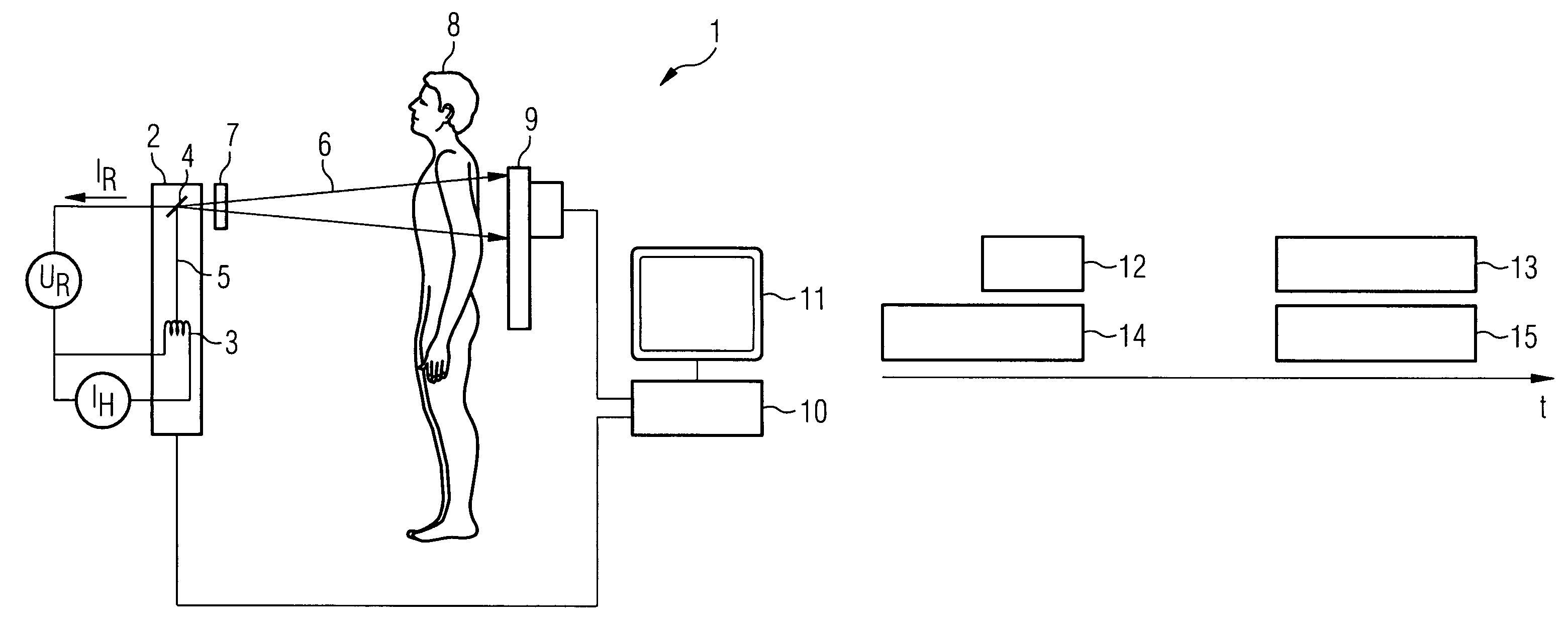Method for recording projection images
a projection image and recording method technology, applied in the field of projection image recording, can solve the problems of time interval between two recordings, inability to allow, semiconductor x-ray detectors, etc., and achieve the effect of reducing the time between the two recordings, avoiding artifacts resulting from switching modes, and suppressing motion artifacts
- Summary
- Abstract
- Description
- Claims
- Application Information
AI Technical Summary
Benefits of technology
Problems solved by technology
Method used
Image
Examples
Embodiment Construction
[0021]FIG. 1 shows an x-ray system 1 with which x-ray recordings for dual x-ray absorptiometry can be performed. The x-ray system 1 comprises an x-ray tube 2 having a cathode 3 in the form of an incandescent filament. The incandescent filament 3 can be heated with the aid of a heater current IH. The cathode 3 emits electrons that are accelerated in the direction of an anode 4 with the aid of a tube voltage UR. That produces an electron beam 5 that strikes the anode 4 in a focused spot. The electrons retarded in the anode 4 produce x-radiation 6, which first passes through a preliminary filter 7 to suppress the low-energy component. The preliminary filters 7 are as a rule copper plates that can be interposed having different thickness into the beam path of the x-radiation 6. The x-radiation 6 then penetrates a patient 8 under examination.
[0022]The x-radiation 6 that has passed through the patient 8 is recorded by an x-ray detector 9 that produces an absorption image of the patient 8,...
PUM
 Login to View More
Login to View More Abstract
Description
Claims
Application Information
 Login to View More
Login to View More - R&D
- Intellectual Property
- Life Sciences
- Materials
- Tech Scout
- Unparalleled Data Quality
- Higher Quality Content
- 60% Fewer Hallucinations
Browse by: Latest US Patents, China's latest patents, Technical Efficacy Thesaurus, Application Domain, Technology Topic, Popular Technical Reports.
© 2025 PatSnap. All rights reserved.Legal|Privacy policy|Modern Slavery Act Transparency Statement|Sitemap|About US| Contact US: help@patsnap.com


